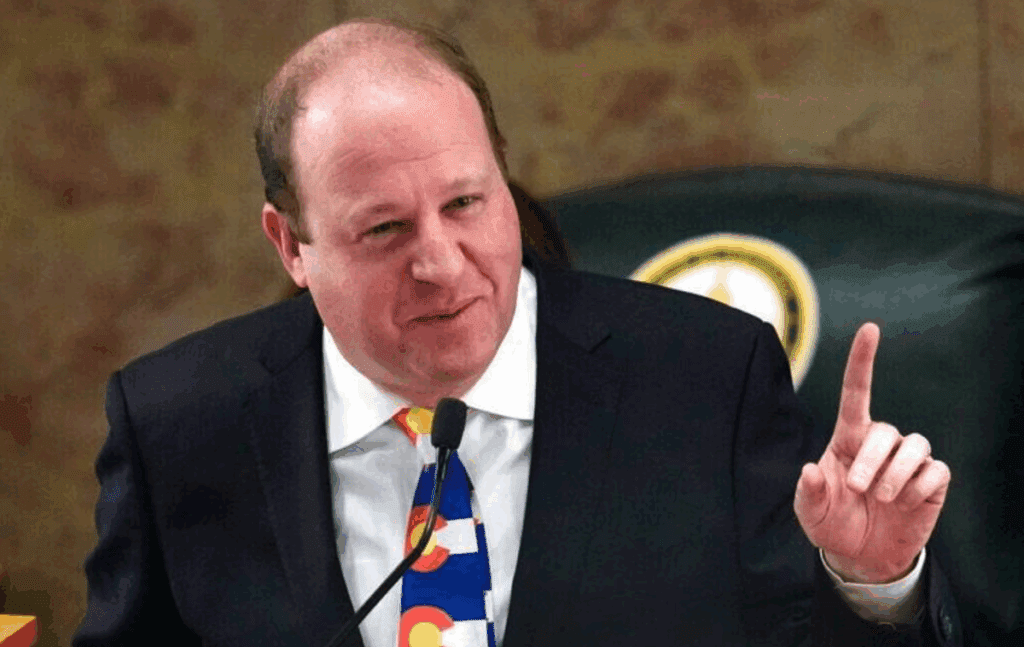Thursday rally in Colorado targets Capitol ideas around education funding
Instead of a direct cut to K-12 education funding, the state’s next spending plan could take a different approach — changing how Colorado counts students.
It’s part of the budget proposal submitted by Gov. Jared Polis in November, but it has school officials and teachers across the state howling in protest, and they intend to press their case at a rally at the state Capitol on Thursday dubbed the “No More Cuts: Statewide Day of Action.”
Given that it’s spring break for a lot of school districts, only a handful intend to close for the day, such as in Boulder, some schools in Denver, Summit County and Adams 12.
The governor’s office is pushing back on the protests, saying canceling school “with short notice … puts hardships on parents and prevents students from receiving the learning they need and deserve.”
“Kids belong in school,” the governor said.
He isn’t alone.
Ready Colorado President Brenda Dickhoner also criticized the planned school closures.
“By shutting down schools for a rally, educators and district leaders are sending a clear and troubling message: political posturing is more important than the educational welfare of our children,” Dickhoner said. “Thousands of students who rely on their schools for learning, structure, and essential services such as meals are left abandoned. These closures disrupt families, force working parents to scramble for childcare, and most importantly, rob students of valuable instructional time that cannot be recovered.”
Teachers’ union: K-12 can’t absorb any more cuts
The Colorado Education Association, the state’s largest teacher union, maintained that, despite the state paying off the “budget stabilization” factor last year, public K-12 is still underfunded by $4,000 to $4,500 per student — or about $4 billion per year. Policymakers and others said that BS factor amounted to a “debt” of more than $1 billion over 15 years.
The union also claimed the state doesn’t have the money to fund the new school finance formula as intended, due in part to the $1.2 billion shortfall anticipated for the 2025-26 state budget.
But CEA President Kevin Vick told Colorado Politics that Thursday’s message isn’t just about the 2025-26 budget.
“We’re trying to remind people that education has been cut for the last 15 years, to the tune of $11 billion,” he said. “That’s had an incrementally worse effect on what we can do for students year to year.”
He said the larger message is that education cannot absorb any more cuts.
Vick said the budget cuts have been frustrating for educators, parents and students. “who are getting shortchanged on a path to their future.”
As for the state’s budget hole, Vick said advocates know the legislature has some hard choices, but “we also know education has been the piggy bank for the state for the last 15 years. That practice needs to stop.”
The budget proposals for K-12
Polis’ plans, as included in his November budget submission to the Joint Budget Committee, called for two changes.
The first deals with student headcount. Currently, the state counts students on a rolling, four-year average, which wards off enrollment swings.
Polis proposed a single-year count, which he said would save money and fund “actual students where they are, rather than where they were four years ago; thus, more equitably driving resources to where the need is.”
That could save the state about $190 million in 2025-26.
School districts balked at that approach.
In Adams 12 Five Star, for example, the superintendent said such a change would cost the district $13 million and it would mean the loss of 130 teachers, larger class sizes and fewer academic and extracurricular options for students.
In a letter to the governor and lawmakers in December, Adams 12 Superintendent Christopher Gdowski wrote that the increase from the new school finance formula would make up only about $7 million of that $13 million cut. The district claimed it’s already underfunded to the tune of $272 million per year, and the change in the student count method would result in funding losses for 138 school districts with declining enrollment out of the state’s 178 school districts.
The governor’s office called the assertion that his proposal would cut funding for K-12 education “false.”
“Any assertion that the Governor has proposed or would support a cut to education funding is simply false. The governor would oppose any budget that cut education funding. The responsible budget proposal he proposed funds students based on where they are learning, not through arbitrary multi-year averaging,” he said.
Polis’ second idea — one that he has now walked away from — was to stretch out the implementation of the school finance funding formula.
That conversation, as it turns out, continues.
Under the proposal as adopted last year, the formula added a new rural funding factor and more funding for at-risk students, English language learners, and special education students. The “cost of living” factor would be applied after that, along with a “locale” factor, a district size factor, and then “extended” high school and online funding. The result would shift more resources to rural and at-risk students.
The total cost is about $500 million over six years, with $150 million pledged in 2025-26.
A study commissioned by the state and released in January said that, “during the phase-in period, funding amounts under both the old and new formulas will be calculated, and districts will be funded at amounts in between the two formulas, with the amount shifting closer to the amount represented by the new formula as 2030–31 approaches.”
The formula is intended to be implemented over a six-year period, but the governor’s November budget suggested changing that to seven years. Under that scenario, 18% of the funding would go to schools in the first year. However, in January, the governor changed his mind and decided not to recommend that change.
The governor’s statement pointed out his budget request “lets the formula passed last year by the General Assembly take effect.”
“This was a step in the right direction, but Colorado’s education environment is not serving students as well as it could,” the office continued. “Nearly every other state in the country has figured out how to fund schools where students are learning and Colorado should do the same to ensure funding is going to Colorado’s existing students, especially those who most stand to benefit from the new school formula.”
The governor has also proposed a $138 million increase for K-12 funding in 2025-26, but given the budget shortfall, budget writers appear leery of approving that large of an increase.
A competing proposal
However, there’s a competing proposal — one that would result in a cut of $50 million, rather than $190 million.
That proposal came from House Speaker Julie McCluskie, D-Dillon, who co-sponsored last year’s revamp of the school finance formula.
McCluskie said Tuesday her proposal would implement the school finance formula at a slightly lower rate but maintain four-year averaging.
She said the governor’s proposal on enrollment averaging “would pull the budgetary rug out from under our school districts, and so we must find a compromise that continues to resource our schools while accounting for fiscal realities.”
Her proposal, she said, would push out the implementation of the new school finance formula from six to seven years, with 10% of the funding in the 2025-26 years, down from 18% as originally contained in the new formula. That would reduce the strain on the general fund and the state education fund, McCluskie said.
At 10%, her proposal would put more new funding into school districts beginning July 1.
The proposal addresses the enrollment count issue but phases it in over several years. The four-year average would stay in place in 2025-26 and go to three years in 2026-27, and then two years beginning in 2027-28 and thereafter.
By slowly implementing changes to multi-year enrollment averaging, this gives the legislature time to come up with other ideas to address declining enrollment.
Perhaps most importantly, the McCluskie proposal seeks to hold all school districts harmless — at 2024-25 funding levels — for 2025-26.
A plan to ‘future-proof Colorado’
In his statement, Polis said he is working with McCluskie and the school districts “to identify a path forward that addresses concerns of districts while also moving away from the fundamental inequity and inaccuracy of Colorado’s current averaging formula.”
“If this plan is not adopted, Colorado risks the ability to sustainably fund schools and ensure funding is directed to our state’s students,” he said.
The governor wants to “future-proof Colorado and a failure to adopt some form of reducing or eliminating funding for students who moved away years ago would lead to major cuts in education funding for where students attend school,” the statement said.
Regardless of which proposal, if any, gets the buy-in from the Joint Budget Committee and legislature, Vick of the teachers union said Wednesday, “We need to find a better way.”
The teachers’ union is part of a coalition that’s doing analysis and polling for a potential ballot measure in 2026. Vick didn’t share just how that would work.
“We don’t want to repeat the failures of the past at the ballot box,” Vick said, “and instead hope to develop a policy that will be popular with voters.”















